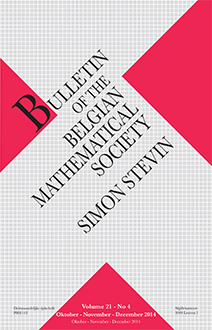Abstract
In the four-peg variant of the Towers of Hanoï game, it is well known that $N$ disks can be transferred from a column to another in $2^{\nabla0}+2^{\nabla 1}+\cdots+2^{\nabla(N-1)}$ moves, where $\nabla n$ denotes the largest integer $p$ such that $p(p+1)/2\leqslant n$, and it was conjectured that this number of moves was the minimum possible. We shall see, in this article, that is is indeed the case.
Dans la variante à quatre colonnes des Tours de Hanoï, on sait bien qu'on peut transférer $N$ disques d'une colonne vers une autre en $2^{\nabla 0}+2^{\nabla 1}+\cdots+2^{\nabla(N-1)}$ mouvements, où $\nabla n$ désigne le plus grand entier $p$ tel que $p(p+1)/2\leqslant n$, et on conjecturait que ce nombre de mouvements était le minimum possible. Nous verrons, dans cet article, que c'est effectivement le cas.
Citation
Thierry Bousch. "La quatrième tour de Hanoï." Bull. Belg. Math. Soc. Simon Stevin 21 (5) 895 - 912, december 2014. https://doi.org/10.36045/bbms/1420071861
Information





